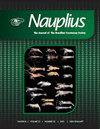Alien crustacean species recorded in Ecuador
IF 0.8
4区 生物学
Q4 MARINE & FRESHWATER BIOLOGY
引用次数: 1
Abstract
Abstract Alien species are organisms introduced into an area outside of their natural range and are considered a major cause of biodiversity loss in the marine environment. The aim of this work is to report on the alien crustacean species observed in Ecuador. A bibliographic review was conducted using a digital search in the scientific literature. A total of ten alien species of crustaceans, representing eight genera in seven families, were encountered in Ecuador. The only crab, Cardisoma crassum Smith, 1870, was observed in the Galapagos Islands. The other species include barnacles, crayfishes, and freshwater prawns. Native ranges of the alien crustaceans include the Indo-Pacific region, North America, Asia, and Australia. Major introduction pathways are aquaculture and transport by ship. Procambarus alleni (Faxon, 1884) was reported recently as an aquarium species, but its presence in the natural environmental is currently unknown. One alien species has been introduced each decade since the 1960s. Some species (the barnacles Amphibalanus improvisus (Darwin, 1854), Amphibalanus reticulatus (Utinomi, 1967), and the copepod Lernaea cyprinacea Linnaeus, 1758) were reported as alien species for Ecuador but need verification regarding their current status. Additionally, the barnacle Dosima fascicularis (Ellis and Solander, 1786) presented an occasional record in the Galapagos Islands, but due to its dispersal ability and open ocean habitat it is not possible to conclude that this really is an alien species. The list of alien crustacean species recorded in Ecuador is considered incomplete due to both scarce published work regarding this topic and taxonomic problems. Therefore, it is necessary to carry out more research to establish a complete list of the alien species present in Ecuador and assess their impact on aquatic ecosystems.厄瓜多尔记录的外来甲壳类动物
摘要外来物种是指引入其自然范围以外区域的生物,被认为是海洋环境生物多样性丧失的主要原因。这项工作的目的是报告在厄瓜多尔观察到的外来甲壳类动物物种。使用科学文献中的数字搜索进行了文献综述。厄瓜多尔共发现十种外来甲壳类动物,代表七科八属。唯一的螃蟹,Cardisoma crassum Smith,1870年,在加拉帕戈斯群岛被观察到。其他物种包括藤壶、小龙虾和淡水对虾。外来甲壳类动物的原生分布范围包括印度-太平洋地区、北美洲、亚洲和澳大利亚。主要的引进途径是水产养殖和船运。阿列尼原ambarus alleni(Faxon,1884)最近被报道为水族馆物种,但其在自然环境中的存在目前尚不清楚。自20世纪60年代以来,每十年就有一种外来物种被引入。一些物种(藤壶类Amphibalanus imperisus(Darwin,1854)、两栖纲Amphibalaus reticulatus(Utinomi,1967)和桡足类Lernaea cypinacea Linnaeus,1758)被报告为厄瓜多尔的外来物种,但需要对其现状进行验证。此外,藤壶藤壶(Ellis和Solander,1786)在加拉帕戈斯群岛偶尔也有记录,但由于其扩散能力和公海栖息地,不可能得出这真的是一个外来物种的结论。厄瓜多尔记录的外来甲壳类动物物种清单被认为是不完整的,因为关于这一主题的出版工作很少,而且存在分类学问题。因此,有必要进行更多的研究,以建立厄瓜多尔境内外来物种的完整清单,并评估其对水生生态系统的影响。
本文章由计算机程序翻译,如有差异,请以英文原文为准。
求助全文
约1分钟内获得全文
求助全文

 求助内容:
求助内容: 应助结果提醒方式:
应助结果提醒方式:


